We get asked to recommend Bird Taxidermy Resources by our friends, we now include below a list of those we have had favourable
feedback on this is not a complete list, if you don't find what your looking
for then please feel free to contact us. If you also wish to link to us
then your taxidermy information shall only be placed in the appropriate
class.
We are interested in Purchasing Victorian Taxidermy, please respond via this on-line form of what you have for sale. HERE
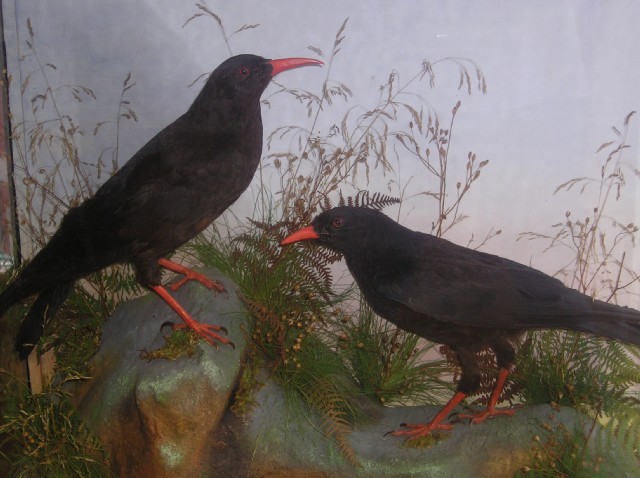 Cornish Choughs by The famous Victorian Taxidermist Hutchinson of Derby. This firm were famous for their mixed cases of both British birds and Exotic birds imported following Darwin's successful expeditions around the globe. Chouhgs were extinct from Cornwall for a number of years, but it is understood that they are now back and numbers are increasing.
Cornish Choughs by The famous Victorian Taxidermist Hutchinson of Derby. This firm were famous for their mixed cases of both British birds and Exotic birds imported following Darwin's successful expeditions around the globe. Chouhgs were extinct from Cornwall for a number of years, but it is understood that they are now back and numbers are increasing.
Hutchinson of Derby
A S Hutchinson of Derby began in business around 1870, clearly following the lead of other major taxidermists of their time.
Hutchinson, whilst produicing mixed cases and the like for private purchase also worked for the major Northern Museum in Sheffield and was also responsible for establishing and setting up the Seebhom Collections of Natural History. The cases that have been produced by thie firm are of excellent quality with beautifully finished cases and immaculate taxidermy.
Perhaps the only observation to the negative, but Hutchinson was not alone when doing this, was the combination of birds that were placed in the one case. There does not appear to be a theme. Woodland birds were also mixed with seabirds, with no attention to the environment. The case of Choughs pictured above is extreamly rare due to both birds being the same species and not accompanied by any other non related birds. The taxidermy, as you can see is wonderful, even after 100 plus years.
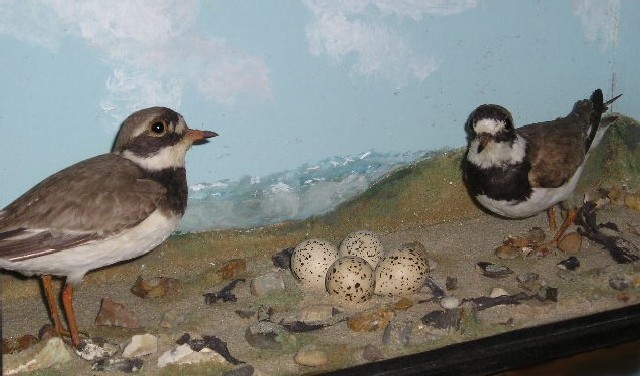
Victorian Ringed Plovers. The eggs are original and in keeping with the attitude of the time. Taxidermists would go out and shoot both adult birds, take either eggs or chicks and create this type of case. The case must therefore be viewed in it's historical context.
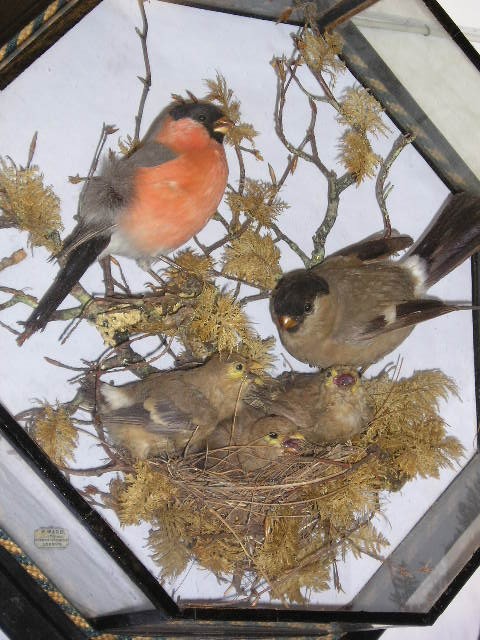 Bull Finches and chicks by Henry Ward
Bull Finches and chicks by Henry Ward
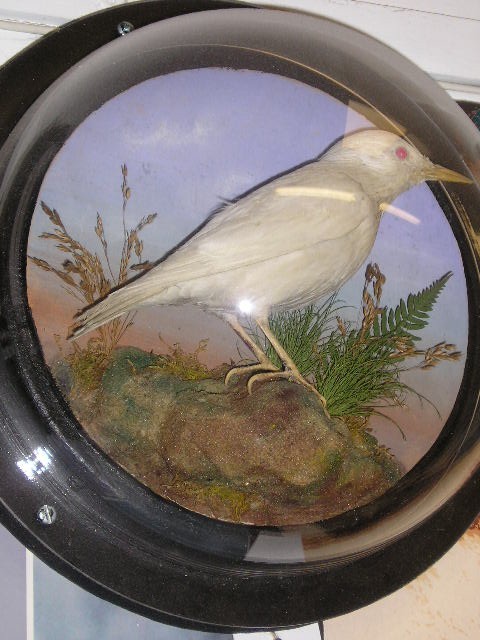 White Starling by Henry Ward
White Starling by Henry Ward
1.jpg) Female Cuckoo by John Cooper & Sons. Cooper was principally a fish taxidermist.
Female Cuckoo by John Cooper & Sons. Cooper was principally a fish taxidermist.
1.jpg) Male Ringed Pheasant by Bill Cox of Liverpool.
Male Ringed Pheasant by Bill Cox of Liverpool.
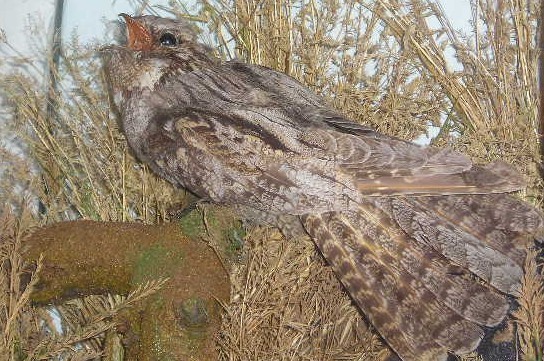 Victorian Nightjar by Chalkely of Winchester.
Victorian Nightjar by Chalkely of Winchester.
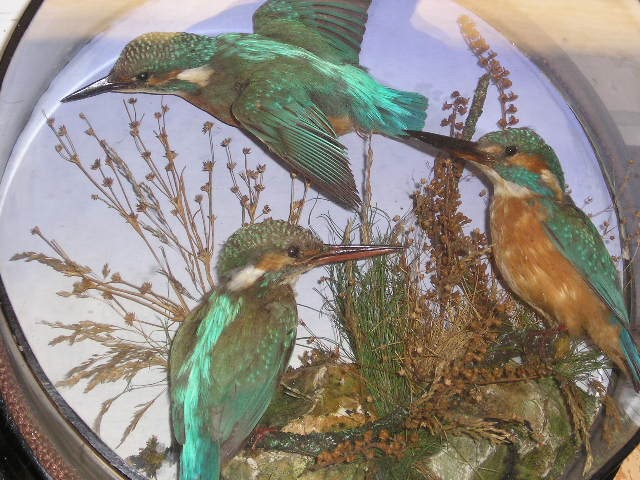 Trio of Kingfishers by Farren of Cambridge.
Trio of Kingfishers by Farren of Cambridge.
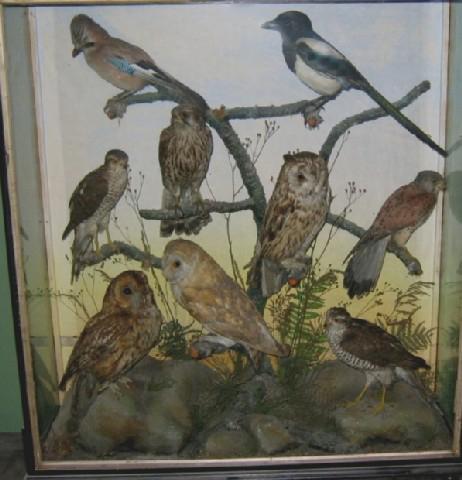
VIctorian mixed case of Woodland birds by Hutchinson of Derby.
www.swfltaxidermy.com
www.bird-art.net
www.birdtaxidermy.com
www.naturescanvas.net
www.nelsonstimberline.com
www.kastaway.com
Realistic Taxidermy
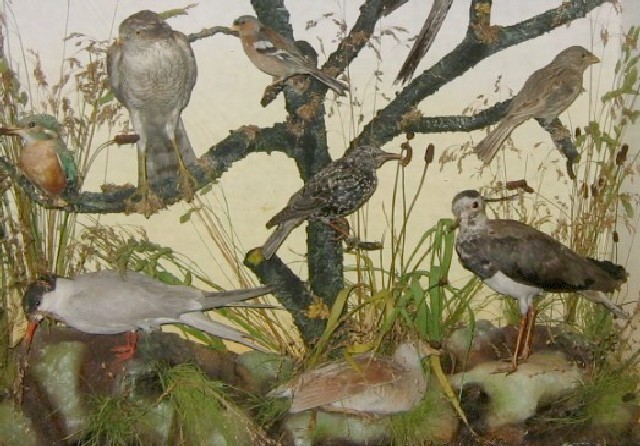
Deatil of another Victorian mixed case of birds by Hutchinson of Derby. Hutchinson did undertake placing a baffling mixture of taxidermy birds in each case. I have no idea why such species were placed together. The taxidermy however is always of the highest standard.
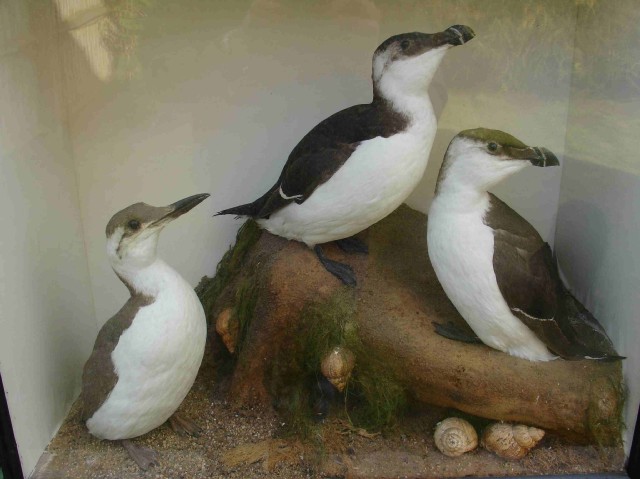
VIctorian Sea birds in a Winter scene.
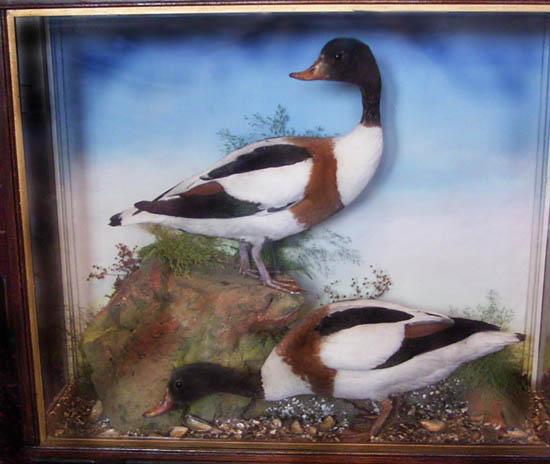
Victorian Shelducks
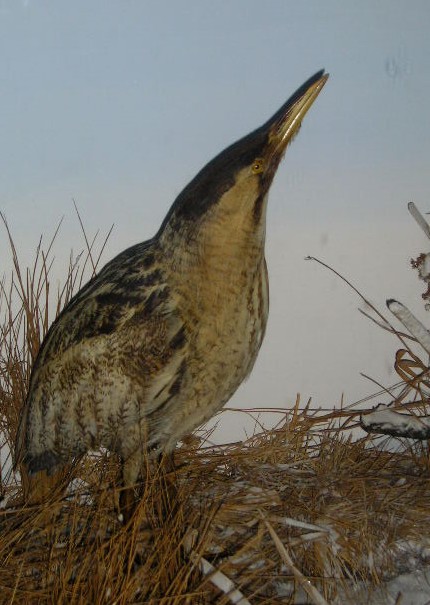
VIctorian Bittern by TE Gunn in a Winter scene.
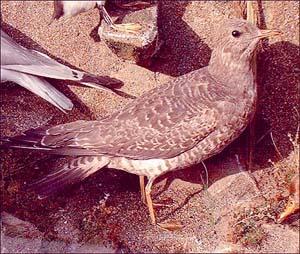
Victorian Richardson Skua in a Winter scene.
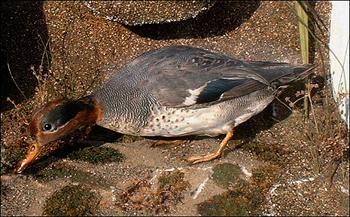
Victorian Teal in a Winter scene.
1.jpg)
VIctorian Bramblings by Farren of Cambridge.
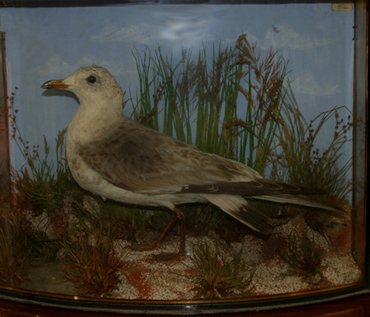
European Black Headed Gull by John Cooper.
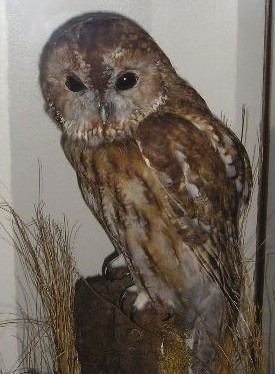
European Tawny Owl.

VIctorian Stock Dove with chicks.
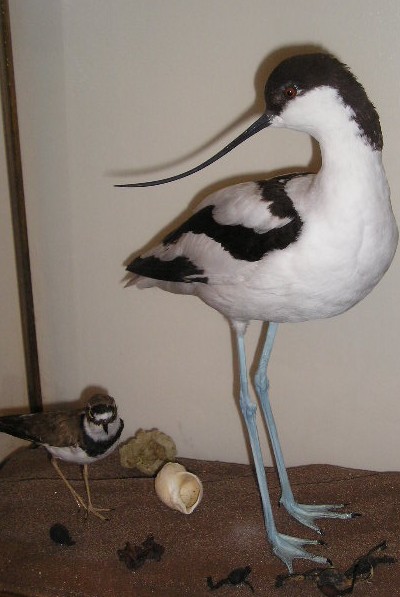
Avocet and Little Ringed Plover by Dereck Frampton. Fantastic case by one of the best of modern taxidermists. Regular winner of competitions held by the Guild of Taxidermists. AJ Armitstead states "he is probably the best in the UK still who is still alive".
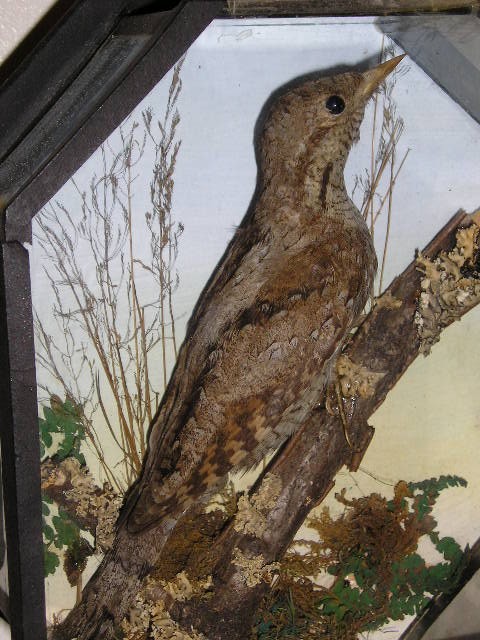
Wyrneck in a wall hanging octagonal case. Victorian Case and very pretty
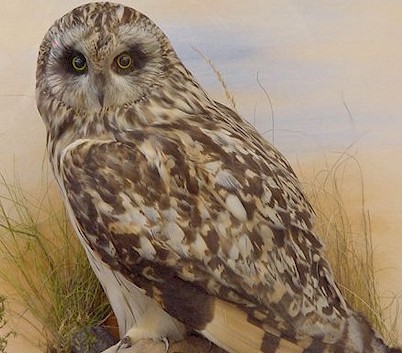 Simply stunning Short Eared Owl by Mike Gadd
Simply stunning Short Eared Owl by Mike Gadd
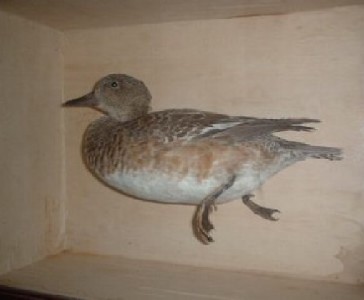
Simply stunning female duck, as if swimming by Cullingford of County Durham.
 Immature European Hobby
Immature European Hobby
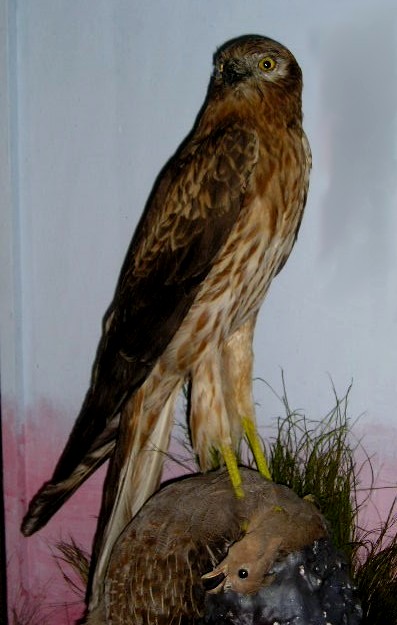
Victorian Montagu's Harrier with English Patridge prey.
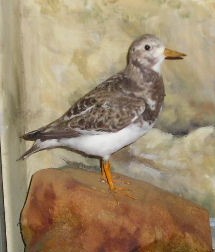
Victorian Turnstone.
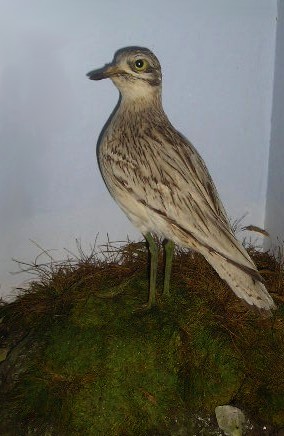 Stone Curlew. Victorian bird, likely to have been by Pratt of Brighton
Stone Curlew. Victorian bird, likely to have been by Pratt of Brighton
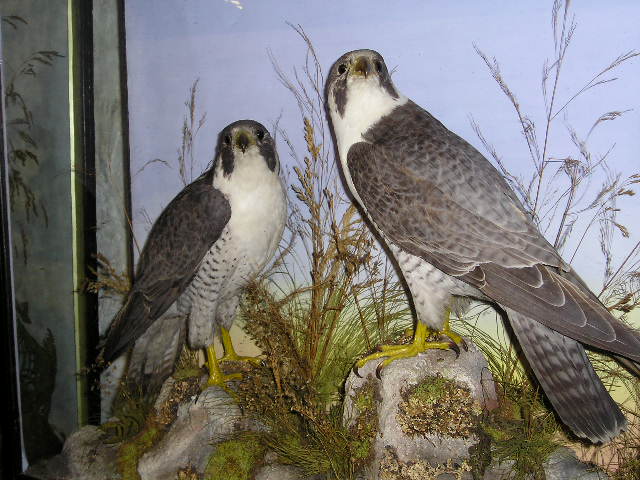
Stunning Peregrines by McCley, from the BCB collection.
.jpg)
Wonderful Kingfishers and Wood Sandpiper by Franklin. Very old and rare case.
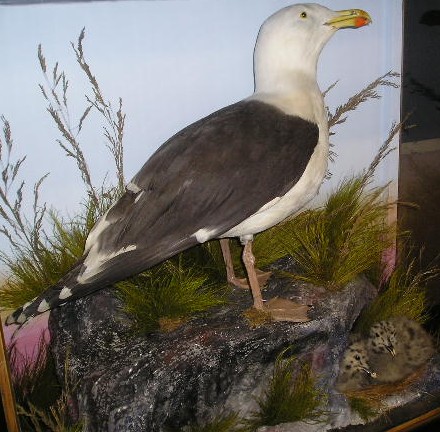
Modern case containing a Black Backed Gull and two chicks. Very much in the style of James Hutchings
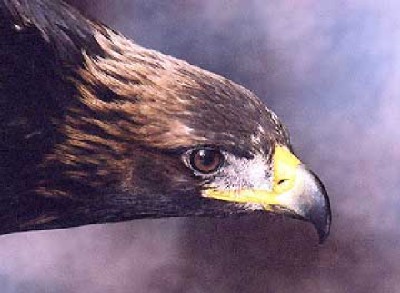
Close up of the head of a Golden Eagle.
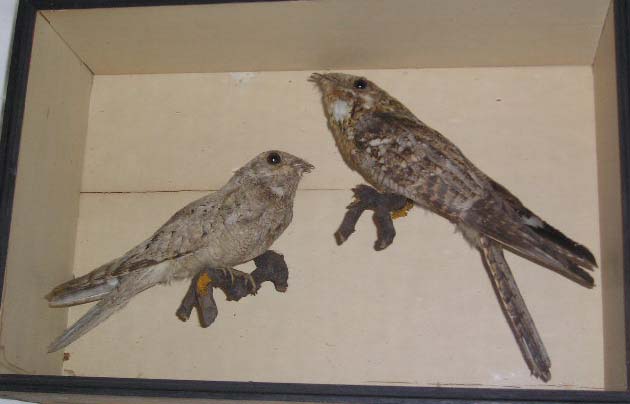
Nightjars
www.wildarttaxidermy.co.uk
www.taxidermystudios.freeserve.co.uk
www.btinternet.com/~taxidermy/shoot.html
www.datavista.co.uk/taxidermy/
www.taxidermy.co.uk
www.taxidermists.co.uk

Avocet
Insects and Pests
Mounted specimens are composed of skin, hair and feathers, and are often stuffed with organic materials such as sawdust, so they are susceptible to attack by a wide variety of insect pests. Insects progressively degrade a specimen by boring holes and channels and grazing on fur and feather, and the debris they create can contribute to other problems such as mould growth.
Few specimens are completely shielded from insect attack. Uncased specimens are obviously vulnerable if conditions are favourable, and unless guaranteed airtight even the best cases incorporate tiny gaps - between a door and frame, for example - through which small insects can crawl.
The importance of regular inspections
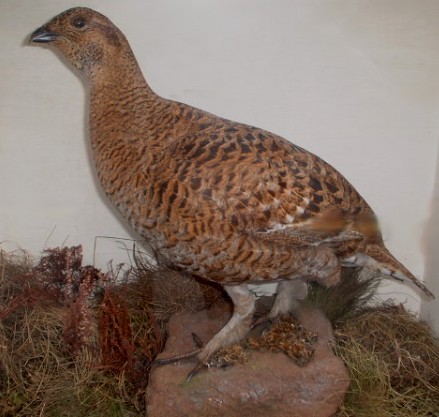
Victorian Grey Hen or female Capercaille. Date unknown.
.jpg)
Bantam By Hutchings.
Inspect specimens
Inspect specimens regularly, especially during the spring and late summer. Get to know the life cycle of the most common pests, and time your inspections accordingly. Look for live insects or larvae, signs of new damage, and 'frass' - a gritty, grey or black powder composed of droppings and debris. Other signs of infestation are hair or feathers, discarded skins, and dead beetles or moths.
If your specimen is not in a sealed case, check its legs and feet, and any creases and folds. Insects tend to lay eggs in cracks and crevices, and the larvae shun light and seek similar hiding places. A powerful light will help in your inspection. It is important to remember that it is the insect larvae that cause the damage, not the adults.
A selection of common pests
" Anthrenus verbasci, the carpet beetle, is about 2-3 mm long, round, and bears a pattern of black, yellow, brown and white scales. The small, brown, hairy larvae are known as 'woolly bears'. With experience, the larval cases are easily recognised.
" Stegobium paniceum, the biscuit beetle, is about 2 mm long, elongated and brown.
" The adult form of Tinea pellionella, the case-bearing clothes moth, is a small grey/brown moth of about
4-6 mm in length. The larvae make distinctive tubular cases that look like small white maggots.
Use a genuinely environmentally friendly spray such as 'Constrain' to control insect infestations. Follow all instructions supplied with the product and do not use excessive amounts of the spray. Pet shops sell sprays for household pets or pet bedding, but these should be used with caution, and not just on the strength of label claims - the expression 'environmentally friendly' is used somewhat freely. Unlike dieldrin and DDT, modern non-persistent sprays do not (or should not) remain active on the specimen over long periods, so any treatment will be effective for a limited time only.
Freezing
Freezing is another option, and for suitable specimens of a manageable size offers a treatment free of the disadvantages of chemical sprays. Wrap and seal the specimen in a polythene bag then place it in a freezer at -18ēC for seven days. At the end of the treatment period remove the specimen from the freezer and leave it, still fully wrapped, to reach room temperature. Remove the wrapping only when the entire specimen has reached room temperature, which may take 24 hours for the core. Domestic chest freezers are normally capable of the required temperature; front-opening models may manage it provided the door is not opened frequently. Commercial freezers operate at about -30ēC.
Taxidermy4Cash does not undertaken taxidermy, rather we are collectors of
other peoples work, both current and historical we also offer web hosting,
a search engine submission service and increasingly one of the larger
article resource banks on the net. So if your keen to learn about Taxidermy
etc, then you know where to look.
We are always interested to here about new resource, if you feel a resource
should be listed here then please contact us.
|
ITEMS
WANTED. Please respond via this on-line form HERE
with a description of what you have for sale.
[HOMEPAGE]
Taxidermy Links.
Please double click on the Taxidermy link icon below.
Taxidermy
Links
|
|
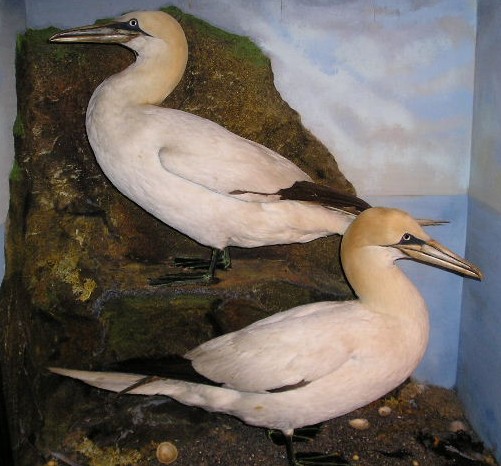

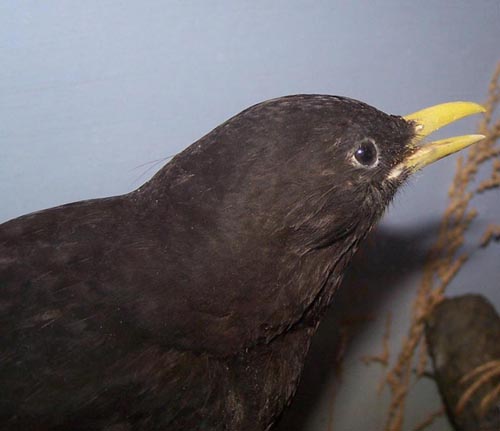




1.jpg)
1.jpg)








1.jpg)










.jpg)




.jpg)